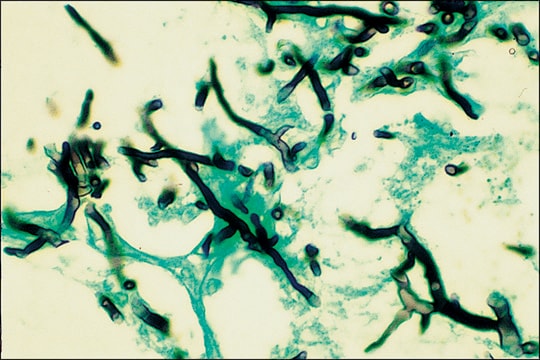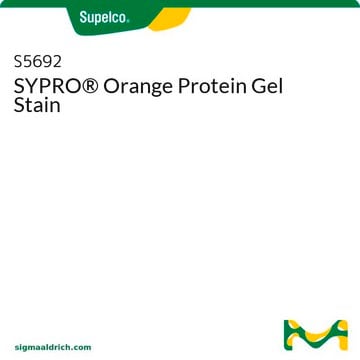PROTSIL1
ProteoSilver™ Silver Stain Kit
Synonym(s):
Silver Staining Kit
About This Item
Recommended Products
usage
kit sufficient for 25 mini-gels (10 × 10 cm)
technique(s)
protein staining: suitable
General description
Application
Features and Benefits
- Premixed and preweighed solutions reduce time and cost of purchasing and preparing individual components
- Optimized protocols help establish conditions for best results
- High sensitivity and low background ensure very low abundance proteins can be detected and resolved from other proteins
- MALDI Compatible - Protein spots of interest can be further characterized by mass spectrometry
- Room Temperature Stability allows easy and convenient storage
Legal Information
replaced by
Signal Word
Danger
Hazard Statements
Precautionary Statements
Hazard Classifications
Acute Tox. 2 Inhalation - Acute Tox. 3 Dermal - Acute Tox. 3 Oral - Aquatic Acute 1 - Aquatic Chronic 1 - Carc. 1B - Eye Dam. 1 - Flam. Liq. 3 - Met. Corr. 1 - Muta. 2 - Repr. 1B - Skin Corr. 1A - Skin Sens. 1 - STOT SE 2 - STOT SE 3
Target Organs
Eyes,Central nervous system, Respiratory system
Storage Class Code
3 - Flammable liquids
Flash Point(F)
132.8 °F - closed cup
Flash Point(C)
56 °C - closed cup
Certificates of Analysis (COA)
Search for Certificates of Analysis (COA) by entering the products Lot/Batch Number. Lot and Batch Numbers can be found on a product’s label following the words ‘Lot’ or ‘Batch’.
Already Own This Product?
Find documentation for the products that you have recently purchased in the Document Library.
Articles
Sigma offers EZBlue™ and ProteoSilver™ reagents for protein visualization, suitable for proteomics and traditional PAGE formats.
Identify causes and remedies for SDS-PAGE sample preparation challenges and optimize electrophoresis conditions.
Bis-Tris SDS-PAGE gel casting kits with mPAGE® TurboMix technology for rapid, reliable gel casting and protein separation.
Protocols
Protocol for sample preparation for cell lysis and efficient protein extraction from cultured tissues and cells for subsequent Western blotting.
Simplify your SDS-PAGE gel preparation with our pre-mixed solutions and protocols to achieve precise protein separation.
Our team of scientists has experience in all areas of research including Life Science, Material Science, Chemical Synthesis, Chromatography, Analytical and many others.
Contact Technical Service













